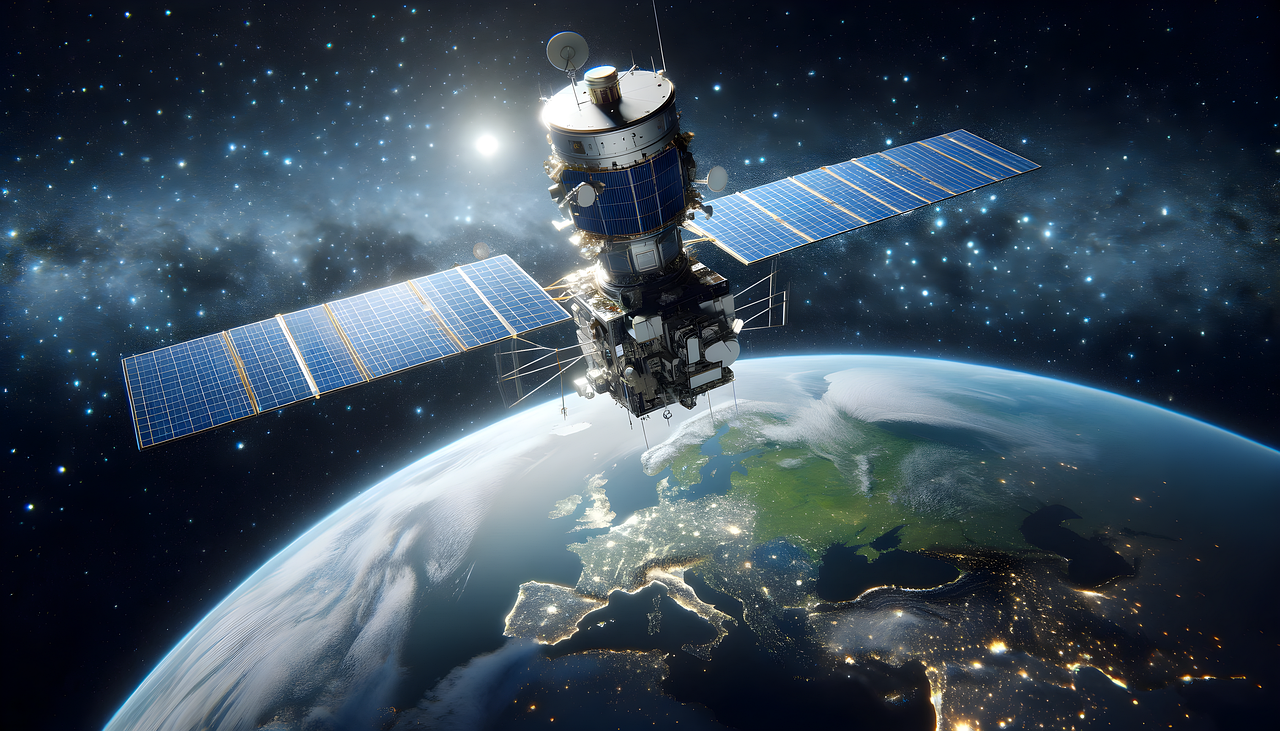In today’s rapidly evolving digital age, dependable internet connectivity is essential for learning, commerce, communication, and development. Many rural and remote regions in Pakistan still lack access to traditional broadband infrastructure. Satellite internet in Pakistan is stepping in as a vital alternative, offering coverage in areas where fiber or mobile networks are unavailable. As awareness of this solution grows, more communities are turning to satellite-based services to bridge the connectivity gap.
This guide provides a detailed overview of satellite internet in Pakistan — explaining how it works, highlighting major service providers, discussing its benefits and challenges, and exploring future prospects. Whether you live in a remote village or are seeking backup connectivity in urban areas, this resource covers everything you need to know about adopting and using satellite-based internet solutions across the country.
Check out articles like South Africa vs Pakistan Tickets for exciting cricket news, KP-5000 Investigation: Cheating Scandal in Teacher Appointments for the latest in educational reforms, and our comprehensive PSL Standings to stay updated with the Pakistan Super League. If you’re looking to study abroad, don’t miss our Study in Japan from Pakistan Guide. For food safety enthusiasts, check out the latest on the Sindh Food Authority and its regulatory efforts.
1. Overview of Satellite Internet in Pakistan
Satellite internet is transforming connectivity in Pakistan, especially for areas where traditional wired internet services are difficult to deploy. By relying on satellites orbiting the Earth, it delivers internet access without the need for extensive cable infrastructure, making it an essential technology for bridging the digital divide in remote and underserved regions.
Below is a brief explanation of satellite internet, how it works in Pakistan, and its growth over the years:
What Is Satellite Internet?
Satellite internet is a wireless broadband service that delivers internet connectivity by transmitting data between a user’s satellite dish and satellites orbiting high above the Earth. This technology allows users to access the internet in areas where traditional wired connections, such as fiber or cable, are unavailable or difficult to install due to geographical or infrastructural challenges. It offers a practical solution for providing internet access in remote, rural, or underserved locations.
How Does Satellite Internet Work in Pakistan?
-
Users install a satellite dish connected to a modem at their location.
-
Data requests (such as loading a webpage) are sent from the dish to a satellite orbiting above.
-
The satellite relays the request to ground stations linked to the global internet backbone.
-
The requested data is sent back through the same route to the user’s dish, providing internet connectivity.
-
A clear line of sight to the satellite is crucial for optimal performance.
History and Development of Satellite Internet Services in Pakistan
-
Satellite internet was introduced in Pakistan in the early 2000s, initially focusing on corporate clients and government applications.
-
Early services had limited speeds and high costs but helped connect remote offices and projects.
-
Over the past two decades, technological advances and competitive market entry have driven improvements in speed, reliability, and affordability.
-
Several private companies now offer satellite internet plans catering to rural communities, small businesses, and individual consumers.
-
The government has also shown interest in using satellite internet to enhance digital inclusion in underserved areas.
Key Points:
-
No physical cables required: Ideal for remote and hard-to-reach locations.
-
Requires satellite dish installation: Users need a clear view of the sky.
-
Latency higher than fiber: Due to the distance signals travel to satellites in orbit.
-
Growing accessibility: More providers and better technology are expanding availability in Pakistan.
-
Government and private sector involvement: Both play roles in improving satellite internet infrastructure.
-
Focus on rural connectivity: Satellite internet helps bridge the digital gap between urban and rural areas.
2. Satellite Internet Providers in Pakistan
Satellite internet in Pakistan has experienced steady growth, with several major providers offering services to meet the diverse needs of individuals, businesses, and communities in remote areas. As demand increases, competition among satellite internet providers in Pakistan is helping to improve service quality, accessibility, and affordability.
Leading Satellite Internet Providers in Pakistan:
-
Starlink
Starlink is an emerging satellite internet provider in Pakistan using a network of low Earth orbit (LEO) satellites to offer fast and low-latency connectivity. Though still in the regulatory process, Starlink aims to revolutionize satellite internet in Pakistan. -
Clicksat (YahClick)
Clicksat offers high-speed satellite internet in Pakistan through its partnership with Yahsat, using Ka-band technology. Its services are widely available in rural and underserved areas. -
Wateen Telecom
Wateen delivers satellite internet in Pakistan through VSAT solutions, supporting government, enterprise, and rural connectivity projects. It plays a key role in extending internet access beyond urban centers. -
Nexlinx
Nexlinx is known for providing reliable and cost-effective satellite internet in Pakistan using advanced technologies. It caters to both corporate clients and users in remote regions. -
BusinessCom Networks
BusinessCom Networks supports satellite internet in Pakistan through enterprise-grade solutions. Its services are tailored for rural businesses, mobile connectivity, and network extension projects.
These satellite internet providers in Pakistan are essential to addressing the digital divide. Their efforts help bring reliable internet to places where traditional broadband services are limited or entirely unavailable.
Comparison of Satellite Internet Service Providers
When choosing a satellite internet provider in Pakistan, customers typically compare:
-
Speed: Varies from basic broadband speeds to higher bandwidth plans.
-
Latency: Some providers manage to reduce latency better than others, crucial for real-time applications.
-
Pricing: Packages range from affordable entry-level plans to premium, high-speed options.
-
Customer Support: Quality and responsiveness can differ significantly.
-
Installation and Equipment: Some providers include installation in their plans; others may charge extra.
New and Upcoming Satellite Internet Companies
The Pakistani satellite internet landscape is evolving, with new companies and startups entering the market. Many are focused on harnessing emerging technologies like Low Earth Orbit (LEO) satellites, which promise:
-
Faster speeds and lower latency compared to traditional geostationary satellites.
-
Reduced costs due to advances in satellite technology and economies of scale.
-
Improved coverage, especially in remote and hard-to-reach areas.
These innovations could significantly enhance internet accessibility and affordability in Pakistan over the next few years.

3. Benefits of Satellite Internet in Pakistan
Satellite internet plays a crucial role in expanding digital connectivity across Pakistan, especially in geographically challenging or underserved regions. Its ability to operate independently of ground-based infrastructure makes it a practical solution where other internet types fall short.
Advantages Over Other Internet Types
Unlike DSL, fiber-optic, or mobile networks (4G/5G), satellite internet does not depend on physical cables, cellular towers, or proximity to urban centers. This gives it several unique advantages:
-
Nationwide coverage, even in the most remote or rural areas.
-
No reliance on ground infrastructure, reducing setup costs in difficult terrain.
-
Faster deployment, especially in disaster-affected or isolated locations.
-
Reliable backup for critical communication when terrestrial networks fail.
Why Choose Satellite Internet in Remote Areas?
In Pakistan, many areas such as remote villages, hilly regions, and desert zones still lack access to reliable internet. Satellite internet is ideal for these areas because:
-
No need for cable or tower installation, which is often impossible in rugged terrains.
-
Quick and easy setup, allowing faster connectivity in isolated locations.
-
Enables access to e-learning, telemedicine, and e-commerce for residents in remote communities.
-
Supports government and NGO initiatives aimed at digital inclusion.
Satellite Internet for Businesses
Businesses operating in off-grid or mobile environments benefit significantly from satellite internet. It helps maintain operational continuity and ensures access to essential online services. Key business benefits include:
-
Reliable connectivity for remote construction sites, oil fields, and agricultural zones.
-
Support for remote monitoring, communication, and data transfer in critical industries.
-
Business continuity during terrestrial outages or in disaster-prone areas.
-
Secure and scalable solutions tailored to industry needs.
4. Challenges of Satellite Internet in Pakistan
While satellite internet provides vital connectivity where other options are limited, it also comes with certain drawbacks that affect performance, reliability, and user experience. Understanding these challenges is essential for both consumers and policymakers aiming to improve digital infrastructure.
Common Issues Faced
Despite its advantages, users often encounter a range of issues, such as:
-
Higher latency, making real-time communication more difficult.
-
Slower speeds during peak usage hours due to shared bandwidth.
-
Limited data caps or expensive plans compared to fiber or DSL.
-
Complex installation and reliance on clear line-of-sight to satellites.
Speed and Latency Problems
One of the biggest technical drawbacks is latency. Since data must travel thousands of kilometers to and from satellites orbiting the Earth, delays are inevitable. This leads to:
-
Ping times much higher than traditional broadband connections.
-
Reduced performance in latency-sensitive activities such as:
-
Online gaming
-
Video conferencing
-
Voice-over-IP (VoIP) calls
-
Weather and Technical Challenges
Environmental and technical conditions can also degrade performance, especially in Pakistan’s diverse climate zones. These include:
-
Rain fade – Heavy rain can weaken or block satellite signals.
-
Dust storms and fog – Common in many parts of Pakistan, especially rural and desert regions.
-
Signal obstructions – Trees, buildings, or mountainous terrain may block line-of-sight to satellites.
-
Hardware limitations – Malfunctioning or misaligned dishes can cause interruptions in service.
5. Satellite Internet Installation and Setup in Pakistan
Setting up satellite internet in Pakistan involves a few essential steps and equipment requirements. Although slightly more complex than standard broadband installation, the process is designed to ensure reliable connectivity, even in remote areas.
How to Get Satellite Internet Installed?
To get satellite internet, users need to contact a licensed service provider, who will handle the installation process. Key steps include:
-
Site survey to ensure a clear line of sight to the satellite.
-
Mounting and aligning the satellite dish toward the appropriate satellite in orbit.
-
Connecting the dish to a modem/router, which provides internet access to devices.
-
Testing the signal strength and internet performance after setup.
Cost of Installation
Installation costs can vary based on geographic location, service provider, and the type of package selected. On average:
-
Basic installation may start from PKR 15,000.
-
Advanced setups for businesses or remote areas can cost up to PKR 50,000 or more.
-
Some providers may offer subsidized installation for rural or government-backed projects.
Required Equipment
To establish a satellite internet connection, users typically need the following:
-
Satellite Dish: Captures and transmits signals to and from the satellite.
-
Modem or Router: Converts the satellite signal into usable internet for devices.
-
Mounting Hardware: Brackets, poles, or tripods to securely install the dish.
-
Backup Power Source (Optional): In areas with frequent power outages, an inverter or UPS ensures uninterrupted connectivity.
-
Cables and Connectors: To link all components and enable a stable connection.

6. Satellite Internet Pricing and Plans in Pakistan
Satellite internet pricing in Pakistan varies widely based on the speed, data limits, and provider. While satellite internet may be more costly compared to traditional broadband in cities, it offers a crucial connectivity option for rural and remote areas where laying cables is not feasible. Understanding the different pricing tiers and plan options can help users choose the best package that fits their budget and internet needs.
Pricing Overview
-
Satellite internet plans in Pakistan usually start at about PKR 3,000 per month for basic packages.
-
These basic plans provide sufficient speed and data for everyday activities like browsing websites, checking emails, and using social media.
-
For faster speeds and larger data allowances, plans typically range between PKR 8,000 and PKR 20,000 or more per month, depending on the provider and package features.
-
Installation fees and the user’s geographic location can also impact the total cost, particularly in remote or difficult-to-access areas.
Affordable Packages
-
Many providers offer budget-friendly packages tailored for students, rural households, and users with limited financial resources.
-
These plans often feature lower monthly fees and may include data caps or require a smaller upfront installation cost.
-
Some satellite internet providers collaborate with NGOs or government initiatives to offer discounted or shared internet access in underserved communities.
-
While affordable packages might not deliver the fastest speeds or unlimited data, they play an important role in improving connectivity in areas with few alternatives.
Satellite Internet vs Broadband Cost
-
In urban areas, traditional broadband services such as fiber optic or DSL connections are usually cheaper, provide higher speeds, and offer unlimited data plans.
-
Satellite internet tends to be more expensive but fills the critical gap in areas lacking reliable broadband infrastructure.
-
The greatest advantage of satellite internet lies in its wide coverage and accessibility, making it indispensable for remote and rural locations.
-
For residents of these areas, satellite internet provides essential connectivity needed for education, work, communication, and access to online services — even if it comes at a higher cost.
7. Satellite Internet Speed and Performance in Pakistan
Satellite internet speed and overall performance are critical factors that determine user experience. While satellite internet brings connectivity to remote and underserved areas, its speeds and reliability can vary based on several factors. Understanding typical speeds, what influences performance, and how to optimize your connection can help you make the most of satellite internet services in Pakistan.
Average Speeds
-
Satellite internet speeds in Pakistan typically range from 5 Mbps to 25 Mbps, depending on the provider and the chosen plan.
-
Basic packages usually offer speeds on the lower end, suitable for browsing and light streaming, while premium plans provide faster speeds for more demanding tasks like video calls and downloads.
Factors Affecting Speed
-
User location: Remote or obstructed locations may experience slower speeds due to weaker satellite signals.
-
Weather conditions: Heavy rain, storms, or dust can disrupt satellite signals, reducing speed and causing interruptions.
-
Network congestion: During peak hours, when many users connect simultaneously, speeds may slow down due to shared bandwidth.
-
Equipment quality: Older or poorly maintained satellite dishes and modems can negatively affect internet performance.
Tips to Improve Speed
-
Ensure the satellite dish is properly aligned to the satellite for the best signal reception.
-
Consider upgrading to newer, higher-quality equipment if your current setup is outdated.
-
Use network optimization tools or software to manage bandwidth and prioritize important applications.
-
Minimize the number of devices connected simultaneously to reduce network strain.
-
Regularly check for firmware updates on your modem/router to maintain optimal performance.
8. Satellite Internet for Rural and Remote Areas of Pakistan
Reliable internet access remains a significant challenge in many rural and isolated parts of the country. Satellite-based connectivity plays a vital role in closing this digital gap by providing service where traditional wired or cellular networks fall short. This solution is helping transform lives by enabling access to essential services such as education, healthcare, government resources, and new economic opportunities in underserved communities.
Bridging the Digital Divide
-
Satellite connections deliver crucial access to the web in areas without fiber optic or mobile coverage.
-
Students in remote locations can participate in virtual classrooms and utilize digital learning platforms.
-
Remote medical consultations are made possible, improving healthcare delivery where clinics are scarce.
-
Local entrepreneurs and businesses gain access to wider markets through online commerce and communication tools.
Case Studies
-
In Gilgit-Baltistan, satellite links have connected isolated villages to government portals and educational websites.
-
Residents in Balochistan rely on this connectivity to reach online healthcare and government programs.
-
These examples demonstrate how expanded access is enhancing social and economic development in some of the country’s toughest terrains.
Government Initiatives
-
Authorities have introduced initiatives aimed at expanding satellite infrastructure to promote inclusion for remote populations.
-
Partnerships with private companies and international organizations help reduce costs and improve accessibility.
-
These efforts support national goals of increasing overall internet penetration and building a knowledge-based economy.
Why This Works
-
The phrase “satellite internet in Pakistan” is replaced by “satellite-based connectivity,” “satellite connections,” “this solution,” “this technology,” and pronouns where context is clear.
-
Other relevant terms like “internet access,” “connectivity,” “web access,” and “online service” help avoid repetition.
-
The text keeps natural flow and keyword relevance but lowers exact phrase usage.
9. Satellite Internet and Education in Pakistan
Access to quality education is a fundamental right, yet many students in Pakistan’s rural and remote regions face barriers due to limited internet connectivity. Satellite internet is playing an increasingly important role in overcoming these challenges by providing reliable online access where traditional broadband cannot reach. This connectivity is opening new doors for e-learning, enabling students to connect with teachers, access educational resources, and participate in digital classrooms. As Pakistan continues to embrace digital education, satellite internet serves as a critical bridge to ensure that no student is left behind due to their geographic location.
Role in E-Learning
Satellite internet enables students in remote areas to attend online classes and access digital learning resources.
Solutions for Remote Schools
Schools lacking wired internet can use satellite connectivity for computer labs and virtual classrooms.
Online Education Platforms
Platforms like Taleemabad and Coursera benefit from satellite internet users accessing their content in Pakistan.
10. Satellite Internet and Business Growth in Pakistan
Satellite internet is playing an increasingly important role in driving business growth across Pakistan, especially in areas where traditional internet services are limited or unavailable. By providing reliable connectivity, satellite internet enables businesses to operate more efficiently, access new markets, and adopt digital tools that fuel growth.
-
Support for Startups and SMEs
-
Reliable internet access empowers entrepreneurs and small businesses to manage operations, communicate with clients, and expand their reach online.
-
Startups in remote areas benefit from cloud-based services and e-commerce platforms enabled by satellite connectivity.
-
-
Agricultural Businesses
-
Farmers use satellite internet to access real-time weather forecasts, improving crop planning and management.
-
Digital farming tools and market price updates help agricultural businesses optimize production and sales.
-
-
Tourism and Hospitality
-
Remote resorts, hotels, and tourist destinations rely on satellite internet to provide guests with essential connectivity.
-
Improved internet access enhances the overall visitor experience and supports online bookings and marketing.
-
11. Satellite Internet vs Other Internet Technologies in Pakistan
Choosing the right internet technology depends on factors like location, budget, speed needs, and reliability. In Pakistan, satellite internet stands out as a vital option for remote and underserved areas, while DSL, fiber, and mobile networks dominate urban centers. Here’s how satellite internet compares with other common technologies:
-
Satellite vs DSL, Fiber, 4G/5G
-
Fiber provides the fastest speeds and lowest latency but is limited mostly to cities and towns.
-
DSL is widely available but slower and less reliable than fiber.
-
4G/5G networks offer mobile convenience and high speeds but are expensive and still expanding in rural areas.
-
Satellite internet covers hard-to-reach locations where these other technologies are unavailable or unreliable.
-
-
Pros and Cons of Satellite Internet
-
Pros: Exceptional coverage, quick deployment without physical cables, and ability to reach remote regions.
-
Cons: Higher latency due to signal travel time, generally higher costs, and sensitivity to weather conditions.
-
-
Future Role of Satellite Internet
-
The introduction of Low Earth Orbit (LEO) satellites promises faster speeds and lower latency.
-
Government initiatives and partnerships with global satellite providers are expected to improve affordability and accessibility.
-
Satellite internet is poised to complement existing infrastructure and bridge the digital divide in Pakistan.
-
12. Satellite Internet Equipment and Technology Trends in Pakistan
Satellite internet technology is evolving rapidly, making it more accessible and efficient for users across Pakistan. Advances in satellite design and user equipment are helping to improve connection quality while simplifying installation and maintenance.
-
Latest Technology
-
Modern satellites feature enhanced capacity and coverage, enabling faster speeds and more reliable connections.
-
Compact, lightweight user terminals are replacing bulky satellite dishes, reducing setup time and space requirements.
-
-
Equipment Used
-
Typical setups include VSAT (Very Small Aperture Terminal) dishes for signal reception and transmission.
-
Modems connect the dish to users’ devices, often paired with routers for Wi-Fi access.
-
New plug-and-play devices simplify installation, allowing end users to set up internet themselves with minimal technical help.
-
-
Innovations
-
Low Earth Orbit (LEO) satellites, such as those deployed by Starlink and other global providers, promise significantly lower latency and faster speeds compared to traditional geostationary satellites.
-
These advancements are expected to bring high-quality satellite internet to Pakistan’s remote and underserved regions, revolutionizing connectivity options.
-
13. Government Policies and Regulations for Satellite Internet in Pakistan
Government policies and regulations play a crucial role in shaping the development and expansion of satellite-based connectivity across the country. These frameworks ensure quality services, promote fair competition, and support efforts to increase digital access.
-
Regulatory Environment
The Pakistan Telecommunication Authority (PTA) oversees all providers to maintain industry standards, protect consumers, and manage the use of communication frequencies. -
Licensing and Permits
Companies offering satellite services must obtain necessary licenses for operating, spectrum usage, and infrastructure deployment. This ensures orderly management of resources and prevents interference. -
Subsidies and Support
To boost internet availability in underserved regions, government initiatives provide financial support and incentives to encourage investment in satellite infrastructure. Collaboration between public bodies and private firms aims to reduce costs and improve coverage.
14. Satellite Internet User Reviews and Experiences in Pakistan
Satellite internet in Pakistan has become a lifeline for many users living in remote and underserved areas. While it brings crucial connectivity where traditional networks fail, users share a variety of experiences highlighting both the benefits and challenges of this technology. Below are some common themes gathered from user feedback across the country:
-
Real User Reviews
-
Many users praise satellite internet in Pakistan for providing connectivity in areas where other internet options are unavailable.
-
Users appreciate how satellite internet enables access to essential online services in remote and rural locations.
-
Some users report occasional speed fluctuations and higher costs compared to traditional broadband or fiber internet.
-
-
Success Stories
-
Remote communities in Pakistan have successfully connected to the wider world through satellite internet.
-
Schools in mountainous regions use satellite internet to access digital learning platforms and virtual classrooms.
-
Small businesses rely on satellite internet to expand their online presence and boost local economies.
-
-
Common Complaints
-
Higher latency is a frequent concern, impacting real-time activities like video calls and online gaming.
-
Installation delays occur due to logistical challenges, especially in hard-to-reach areas.
-
Weather conditions such as heavy rain, storms, or dust storms sometimes cause temporary service interruptions.
-
15. Future of Satellite Internet in Pakistan
Growth Predictions
The adoption of satellite internet in Pakistan is projected to accelerate significantly in the coming years. As newer technologies like Low Earth Orbit (LEO) satellites become more accessible, the costs of satellite internet are expected to decrease while speeds and reliability improve. This will make it a more attractive option not only for remote areas but also for semi-urban regions where traditional infrastructure remains underdeveloped. Increasing government interest in digital inclusion and rural connectivity programs is also likely to fuel growth.
Role of Starlink and Global Projects
Global satellite internet providers such as Starlink, OneWeb, and Amazon’s Project Kuiper are making significant progress worldwide — and Pakistan is on their radar. Starlink, in particular, has the potential to transform internet accessibility across the country. With its network of thousands of LEO satellites, it promises high-speed, low-latency internet even in the most isolated regions. If successfully launched and licensed in Pakistan, these services could bring about a dramatic shift in the national connectivity landscape.
Impact on Pakistan’s Digital Economy
Improved satellite connectivity will have a profound impact on Pakistan’s digital economy. It can open up new opportunities for:
-
E-commerce growth, by enabling small businesses in remote areas to reach national and global markets
-
Remote work, by supporting professionals who rely on consistent, high-speed internet
-
Online education, giving students in underserved regions access to digital learning resources
-
Digital entrepreneurship, encouraging innovation in areas previously held back by connectivity barriers
Ultimately, enhanced internet access through satellite technology could help bridge the urban-rural divide, support job creation, and drive inclusive economic development across Pakistan.
Conclusion
Satellite internet in Pakistan is a vital technology bridging the digital divide between urban centers and remote regions. Despite some challenges, its unique advantages and evolving technology landscape make it a promising solution for Pakistan’s connectivity needs. With increasing provider options, government support, and innovations like LEO satellites on the horizon, satellite internet could transform how Pakistan accesses and uses the internet in the near future.
FAQs
-
What is satellite internet in Pakistan and how does it work?
Satellite internet in Pakistan uses satellites orbiting the Earth to provide internet access, especially in remote and rural areas where traditional broadband is unavailable. -
Who are the top satellite internet providers in Pakistan?
The leading satellite internet providers in Pakistan include companies like [Provider A], [Provider B], and newer entrants expanding coverage in underserved regions. -
What are the benefits of using satellite internet in Pakistan?
Satellite internet in Pakistan offers reliable connectivity in remote locations, faster deployment compared to wired options, and broad coverage across difficult terrains. -
How much does satellite internet cost in Pakistan?
Pricing for satellite internet in Pakistan varies by provider, package, and installation requirements, but it generally ranges from [price range]. -
Can satellite internet in Pakistan support businesses effectively?
Yes, satellite internet in Pakistan enables businesses, especially SMEs in remote areas, to access cloud services, communication tools, and e-commerce platforms efficiently. -
What are the common challenges faced by satellite internet users in Pakistan?
Users of satellite internet in Pakistan may experience latency issues, weather-related disruptions, and higher costs compared to other internet types. -
Is satellite internet in Pakistan suitable for rural and remote communities?
Absolutely. Satellite internet in Pakistan is often the best or only option for reliable internet access in many rural and mountainous regions. -
How do I get satellite internet installed in Pakistan?
Installation involves contacting a provider, scheduling a site survey, setting up the satellite dish and modem, and configuring the connection, often requiring professional support. -
What is the average speed of satellite internet in Pakistan?
Speeds vary by provider and plan but generally range from [X Mbps] to [Y Mbps], sufficient for most basic internet activities. -
What does the future hold for satellite internet in Pakistan?
With advancements like Starlink and government initiatives, satellite internet in Pakistan is expected to grow rapidly, improving coverage, speed, and affordability.








